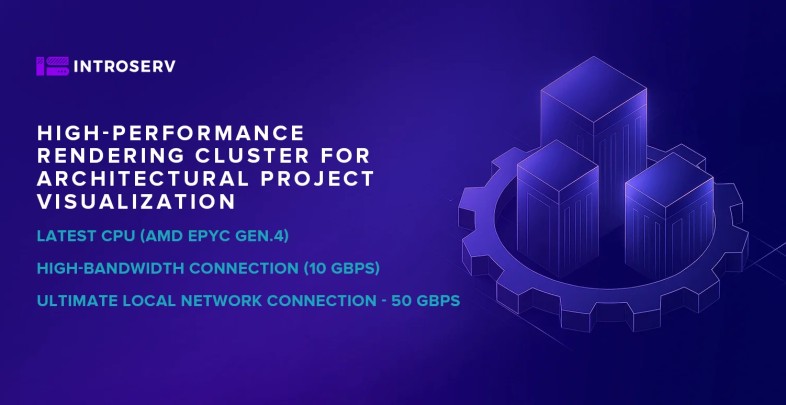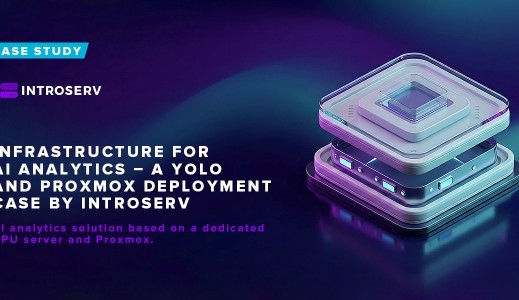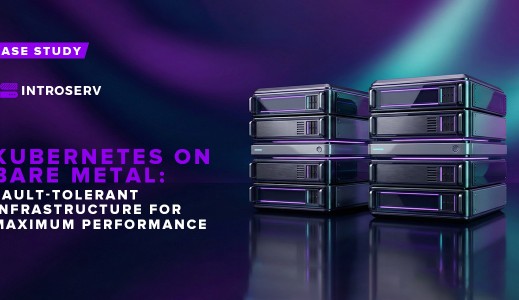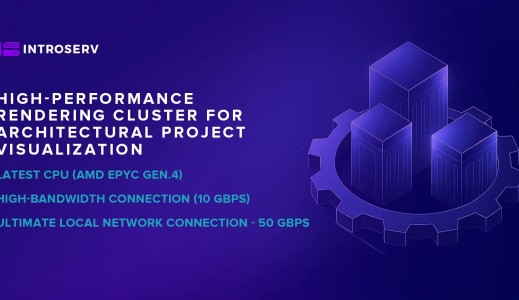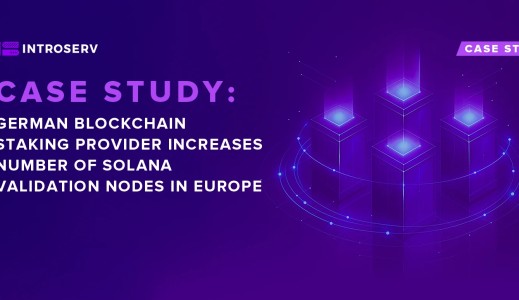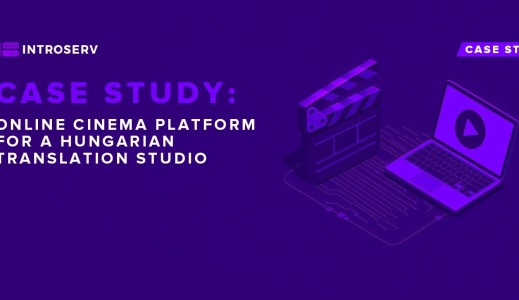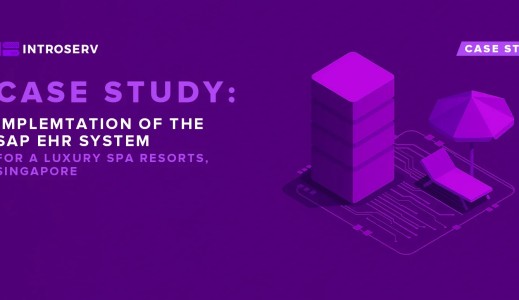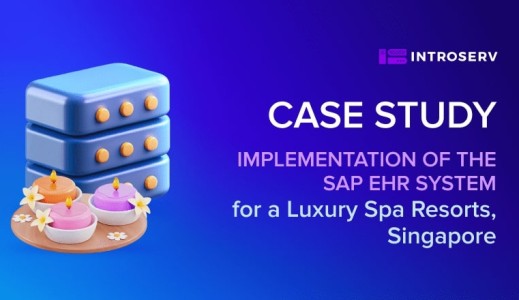Goals & Results

Context
The client is a dynamically developing architectural company in Belgium. The main specialization is the design of civil buildings and public spaces, from concept to working documentation. In its work, the company actively uses 3D modeling and design applications to create high-quality architectural visualizations. These visualizations are a key tool for presenting projects to clients and obtaining approvals.
At the time of the inquiry, the company had received an extensive order for upcoming projects. Existing workstations and a small number of local rendering resources simply could not handle the increasing volume and complexity of the upcoming projects. The company's management was faced with the choice of purchasing updated IT equipment or using data center services.
Due to bureaucratic obstacles in financing the equipment purchase, as well as the lack of suitable premises and infrastructure, the deployment of the client's own server room became a labor-intensive and time-consuming process. Considering these factors and additional advice from INTROSERV's technical specialists, the architectural firm opted for a data center solution.
The challenge
The client needed to significantly scale their rendering capabilities. The primary goals were:
- Dramatically increase IT infrastructure performance: This would enable them to handle large-scale scenes and, most importantly, reduce render job processing times.
- Ensure the project's throughput: Prepare the infrastructure for larger, more complex sub-projects that demand significant computing power.
- Maintain software compatibility: Seamlessly integrate the updated solution with their existing software stack.
- Optimize your budget: Build and lease a high-performance solution that is also cost-effective.
- Guarantee reliability and security: Ensure data integrity and secure access to the upcoming computing cluster, given the constant handling of sensitive, proprietary information.
The Solution
To address the assigned tasks, INTROSERV technical specialists designed and deployed an advanced solution—a server cluster for network rendering (distributed rendering).

Solution Architecture
The system consists of four high-performance server nodes, each powered by a 4th-generation AMD EPYC 9654 processor featuring 96 high-performance physical cores and 256 GB of DDR5 RAM. AMD EPYC 9654 was selected for its optimal balance of core count, performance, and cost-efficiency in rendering workloads.
Renders node
- Location: France (Gravelines)
- CPU: AMD EPYC GENOA 9654
- 96 Cores, 192 Threads, 2.4/3.55 GHz
- Memory: 256GB ECC DDR5
- Disk: 2x 960GB NVMe, 2x 1.92TB NVMe
- RAID: Software RAID1
- Port/Traffic: 1 Gbps - Unmetered
- VLAN: 50 Gbps VLAN
- Anti-DDoS: Anti-DDoS protection
Storage Node
- Location: France (Gravelines)
- CPU: AMD EPYC GENOA 9254
- 24 Cores + 48 Threads 2.9/3.9 GHz
- Memory: 128GB ECC DDR5
- Disks: 2x 960GB NVMe Software RAID1
- Disk: 6x 3.84TB NVMe Software RAID5
- Port/Traffic: 10 Gbps - Unmetered
- VLAN: 50 Gbps VLAN
- Anti-DDoS: Anti-DDoS protection
Network storage:
Housed on a dedicated server within the same local network, network storage is configured with disk drive redundancy. This guarantees high availability and secure storage of all project files, textures, and scenes. This setup ensures that rendering data remains accessible to every node in the cluster while safeguarding against data loss in case of disk failure.
High-speed LAN:
All four node servers and the NAS are interconnected via a 50 Gbps local area network. This high-speed connection is essential for efficient distributed rendering, enabling rapid data transfer between nodes and minimizing latency.
External access and security:
- Public access: Since the file storage server has the highest speed Internet connection—10 Gbps, it performs several tasks. The installed Proxmox VE virtualization platform allows virtual machines deployment for storage management. In addition, it provided the pfSense virtual router, which provides access to the remote server infrastructure from the company office.
- VPN tunnel: All traffic between the customer's office and the rendering cluster is wrapped in a VPN tunnel. This guarantees data encryption and protection from unauthorized access, ensuring project confidentiality.
- Controlled Access: Access to the cluster is strictly regulated and limited to authorized users only.
- Monitoring: All servers are added to a monitoring system that tracks their performance, utilization, temperature, and other key parameters. This allows system administrators to quickly identify and fix potential problems, ensuring cluster stability.
High availability:
Power and network connectivity redundancy at the host level creates an additional level of fault tolerance. INTROSERV system administrators aggregate network interfaces to maximize LAN speed, and redundancy of key network equipment nodes avoids single points of failure.
Integration with 3D modeling and design applications:
The cluster is optimized for network rendering, efficiently distributing scene rendering tasks across all 384 high-performance processor cores. Pulze’s Render Flow was selected as the network rendering manager due to its broad compatibility with leading 3D modeling and animation platforms, including Autodesk’s industry-standard solutions.
A strategic leap forward
Once again, INTROSERV has proven its expertise in constructing sophisticated hybrid infrastructures, empowering the architecture firm to elevate its large-scale project handling capabilities. The results were:
- Performance Boost: By enabling parallel rendering across hundreds of CPU cores, visualization time was slashed from days to hours and, in some cases, even minutes.
- Competitive Edge: The client can now tackle more complex, detailed, and expansive projects that were once beyond reach due to resource limitations.
- Streamlined Workflow: Designers receive faster feedback on renderings, allowing quicker adjustments and iterations, significantly enhancing the design process.
- Reliability & Security: With a high-speed network, redundant storage, a secure VPN tunnel, and a robust monitoring system, the cluster delivers stability, security, and exceptional uptime.
Investing in a dedicated rendering cluster wasn’t just a solution to immediate challenges—it was a strategic decision that secured the firm’s growth, competitiveness, and long-term efficiency.
